Wednesday
Community ArticlesExploring Emperor YongLe
article and photos by Duncan McNaught, Boulder, CO
edited by Melanie Klein and Mariah Simonton
I recently made a pilgrimage to sites connected with the ancestral sovereign, Emperor YongLe. It was a success. This was mainly because like the other ancestor sovereign pilgrimages I’ve attempted, I completed it.
At times it wasn’t particularly pleasant; the air quality was challenging and the big city was sometimes quite lonely. I had to remind myself often why I was in such a place at such a time: because Sakyong Mipham Rinpoche told me it would be a good idea. I left China with a much stronger connection to YongLe and the legacy he left as one of the early rulers of the Ming Dynasty. For that I am very grateful.
I flew into Beijing simply enough – a short hop after staying with my wife’s family and friends in South Korea. The day after arrival I decided to take public transportation to the Ming Tombs – the burial place of the YongLe Emperor.
It was a great start to the pilgrimage – I was met by a massive statue of the emperor at his tomb which looked over many artifacts exhibited there. Behind the exhibition gallery sits the original burial site and tower, which is surrounded by ancient Nine-Dragon Juniper trees. When leaving, I bowed to the four directions and felt the breeze pick up, and I supplicated for the influence of the YongLe Emperor in today’s world to increase, and for enlightened societies to blossom.
The next day I visited Tiananmen square and the Forbidden City. Unknown to me, it happened to be the 25th anniversary of the massacre, and security was very high.The scale of the site was amazing – huge entry halls looking over large concrete squares. It gave a very strong impression of just how powerful those who ruled from this palace – which YongLe first had built for himself – had been. It was hard for me to penetrate the significance of this great place.
After I left, I realized that I felt its mark upon me. I also took some time that day to walk through the parks of central Beijing, exploring the food (pork with fennel-cabbage-pickle dumplings, Peking Duck, and Noodles in Black Bean Sauce being highlights) and culture (acrobatic performance, park life).
Later in the day I met a young girl from Taiwan who was a Buddhist. After I told her about my pilgrimage, we shared an interesting conversation. She was very surprised to hear that Buddhism was alive and well in the West and involved certain practices and rituals. She seemed inspired to find out more, and for that alone my trip felt worthwhile.
On the third day I was somewhat late getting to the Temple of Heaven as I’d spent a long time in a bank, handing in about $30 of counterfeit currency that a sneaky taxi driver had swapped with me late the night before. I walked around the grounds of the temple – glad of the peaceful greenery, a welcome respite from the big city.I planned to visit the Great Wall at Badaling on day four of my trip, but, as it was raining solidly, I went instead to the Lama Temple with a few people I’d met at the Dragon King Guesthouse, where I was staying. It was very enjoyable to speak with them about Tibetan Buddhism, of which they had little knowledge and some genuine interest. They joked that I should get a job there as a tour guide. I did, however, get to the Great Wall at Badaling the following morning – a beautiful, clear day after the rains of the day before. It was very enjoyable climbing up and down the restored section of the wall before jumping on the bus back to the city.
On my sixth and last full day, I went to the Summer Palace and the rains returned. Thunder clapped like dragons playing in the sky as I contemplated the pilgrimage with my favorite local beer under the welcome protection of a public food tent.
Overall, the Ming Tombs was clearly the site where I’d made the strongest connection to the YongLe Emperor, and the other pilgrimage events paled in comparison. As for these, visiting the Great Wall was nevertheless a special event, but I felt a little sad to have missed most of the Temple of Heaven. And, as I’ve noted, the Forbidden Palace was so huge that I found it hard to penetrate.After this brief contemplation, and reading some more of “Journey to the North Star” by Douglas Pennick (a novel in which the YongLe Emperor’s biography is written by one of his eunuchs), I set off around the large Kunming Lake, and explored the Summer Palace gardens – which were awesome.
I felt compelled to share this brief story with the community that it might be a taster of what a pilgrimage could be like for you. I welcome your feedback.
~~Duncan McNaught has been following the Shambhala Path since 2003 and lives in Boulder, Colorado. He is married with a 13-month-old son and works as a software engineer.

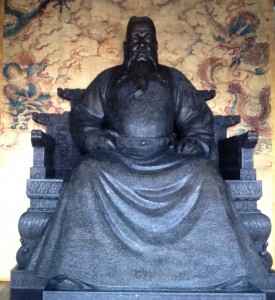
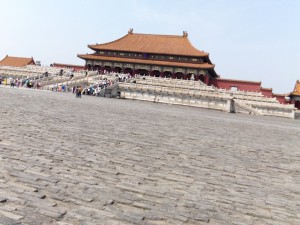
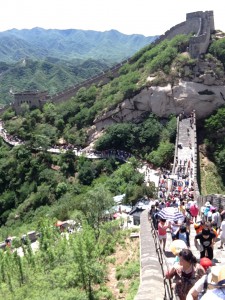
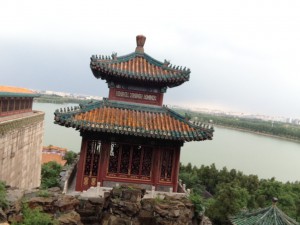
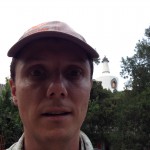
















Nov 8, 2014
Reply
Thank you very much, Duncan, for undertaking these pilgrimages and particularly for sharing this story of your journey to meet His Imperial Majesty YongLe, also known as Yung-lo. Some of the sites – Lama Temple and Temple of Heaven – are places I’ve wanted to visit since childhood (and which have always felt very familiar.)
Readers may be interested in learning more about the “Lama Temple”: http://en.wikipedia.org/wiki/Yonghe_Temple
Thanks, Duncan! I look forward to following all of your travels to meet the ancestors,
Marc Matheson.
Oct 30, 2014
Reply
Dear Duncan,
I am so glad you decided to share this with more people.
It is wonderful to be able to look at your pictures, read a bit about this ancestral sovereign, Yung Le. Seeing the place he inhabited and reading about the conversations you shared with folks you met along the way ignites my curiosity and delight.
Thank you for being a bridge for those of us who cannot make such a journey just now.
Simply having a taste of what it was like for you is inspiring!
Love,
Cal
Oct 30, 2014
Reply
At the British Musseum in London there is a wonderful exhibition about the Ming Dinasty.
It helps you to have a chance to admire the beautiful objects. It also has a lot of information about the life at the Court.
Many of the objects exhibited are for the first time outside of China.
It will run ip to Jan. 5th
Oct 29, 2014
Reply
Thanks for sharing Duncan. Very interesting . Wishing you and your family all the best,
Timaree Bierle-Dodds
Vancvouer WA
Oct 29, 2014
Reply
Thanks for sharing this, Duncan. I think it’s wonderful that you’ve been doing pilgrimages to deepen your sense of connection and understanding of the ancestral sovereigns. I probably won’t have the chance to physically do this and so you’ve given me a feeling of what it was like for you. Many thanks!